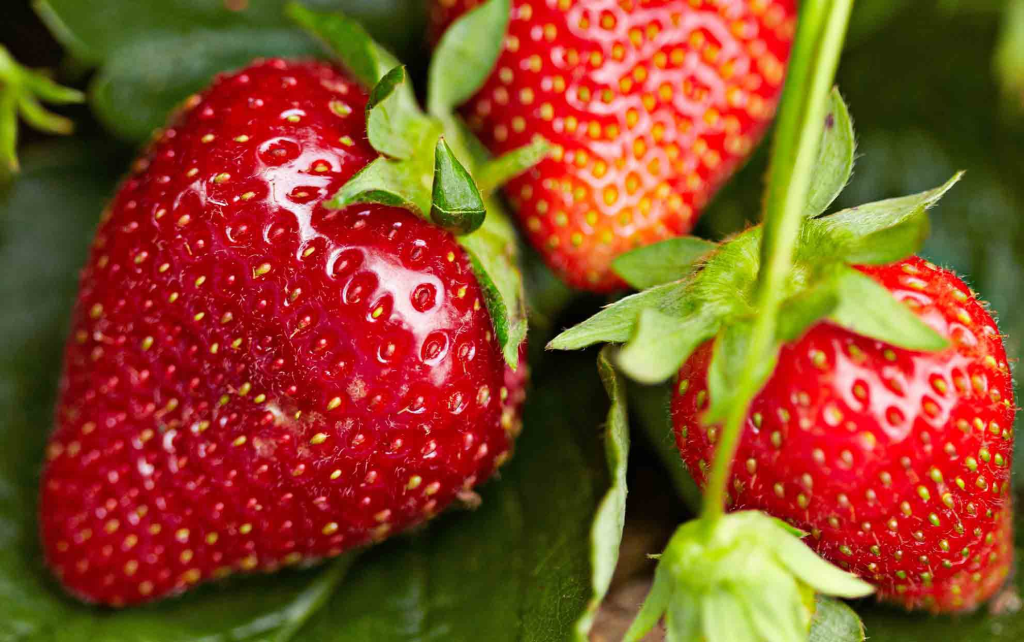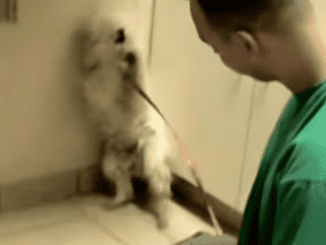If you’re like most people, when you bring fresh produce home from the grocery store, you probably give it a quick rinse under tap water, shake off the excess, and pop it into the fridge. Some folks might even skip the rinse altogether, assuming that a light wash is enough to remove any dirt or pesticides. However, after learning what I’m about to share, you might want to reconsider your approach—especially when it comes to those juicy red strawberries we all love.
Recently, a viral trend on TikTok has brought to light a shocking truth about what might be lurking beneath the surface of your strawberries. The cleaning method, which has captivated millions of viewers, is simple yet revealing: submerge your strawberries in a bowl of salt water. The results? Tiny bugs and other debris that you might not have realized were hiding in your fruit. Let’s dive into how this method works and why it’s a game-changer for how you clean your produce.

To try this method for yourself, all you need is some salt, water, and a bowl. Start by dissolving a generous amount of salt in the water—enough to create a saline solution, but not so much that it won’t fully dissolve. Then, place your strawberries into the bowl, ensuring they are fully submerged. While some TikTok users suggest letting them soak for about five minutes, others recommend leaving them in the solution for as long as an hour for maximum effectiveness.
After the soaking time is up, remove the strawberries, rinse them thoroughly to wash off any remaining salt, and pat them dry. Now, take a look at what’s left in the bowl. Many users have been shocked to find tiny bugs, dirt, and other particles that the salt water has drawn out of the strawberries. It’s an eye-opening experience that might make you think twice about how clean your produce really is.
Before you start swearing off strawberries altogether, it’s important to understand why these bugs are there in the first place. Strawberries, like many other fruits, are grown in environments where they’re exposed to various insects and pests. Despite the best efforts of farmers and suppliers to clean the fruit before it reaches your grocery store, some tiny bugs can still be embedded deep within the berries’ crevices.
The bugs you might see after performing the salt water test are typically harmless. They’re often small insects like aphids or thrips, which are commonly found in agricultural environments. While the idea of eating bugs may be off-putting, these insects are a natural part of the ecosystem and aren’t harmful if ingested in small quantities. That being said, knowing they’re there is unsettling, and it’s always better to clean them out if you can.
Many of us have been conditioned to believe that a quick rinse under tap water is sufficient to clean our produce. However, as the salt water method has shown, a simple rinse often isn’t enough to remove all the dirt, bugs, and pesticide residues that can cling to the surface—and sometimes, the inside—of fruits like strawberries.
While tap water can help remove some surface dirt, it doesn’t have the power to dislodge tiny bugs or break down the waxy residues left by pesticides. Additionally, the intricate structure of strawberries, with their many seeds and crevices, makes it easy for contaminants to hide in places that water alone can’t reach.
@callmekristatorres WAIT FOR IT… Still trying to think happy thoughts today. #fyp #foryou #strawberrieswithbugs #bugsinstrawberries #rednoseday #got2bhome ♬ original sound – Krista Torres
If you want to ensure your strawberries are as clean as possible, some TikTok users recommend taking the salt water method a step further by adding a splash of distilled vinegar to the mixture. This addition not only helps to remove bugs but also effectively eliminates dirt, bacteria, and pesticide residues that could be clinging to your strawberries.
Vinegar is a natural disinfectant with acidic properties that make it effective at killing bacteria and breaking down harmful residues. When combined with salt water, vinegar helps to loosen any stubborn contaminants that might be sticking to the surface of the strawberries. This method is especially beneficial if you’re concerned about the presence of harmful bacteria like E. coli or Salmonella, which can sometimes be found on produce.
To use vinegar in your produce-cleaning routine, simply add about a half cup of distilled vinegar to the salt water solution before soaking your strawberries. After letting them soak for the desired time, be sure to rinse the berries thoroughly under fresh water to remove any remaining traces of salt or vinegar. This step is crucial, as you don’t want your strawberries to retain an unpleasant salty or vinegary taste.
While the thought of bugs in your strawberries is undeniably unsettling, it’s better to know they’re there and get rid of them. Properly cleaning your produce isn’t just about removing insects; it’s also about protecting your health. Fruits and vegetables can carry harmful bacteria, pesticides, and other contaminants that can make you sick if ingested. By taking the extra time to clean your produce thoroughly, you’re reducing your risk of exposure to these hazards.
@thatnatchats y’all better WASH your strawberries ‼️😳😭 Comment what I should look at next! ✨🔬 #fyp #foryou #science ♬ Don't Start Now – Dua Lipa
One of the most important reasons to thoroughly clean your produce is to prevent foodborne illness. Bacteria like E. coli, Listeria, and Salmonella can be present on fruits and vegetables, especially those that are grown close to the ground or exposed to contaminated water sources. Washing your produce with a combination of salt water and vinegar can help kill these bacteria and make your food safer to eat.
Even organic produce can have traces of pesticides, as these chemicals can drift from nearby non-organic fields. Washing your produce with vinegar helps to break down these pesticide residues, ensuring that your fruits and vegetables are as clean and safe as possible. This is particularly important for strawberries, which are known to be one of the most pesticide-contaminated fruits.
Incorporating the salt and vinegar soak into your routine is a simple way to ensure that the produce you and your family consume is as clean and safe as possible. It only takes a few extra minutes, but the peace of mind it provides is well worth the effort. Plus, once you’ve seen the results for yourself, it’s hard to go back to a simple rinse.

Changing the way you clean your produce doesn’t have to be a daunting task. By adding a salt and vinegar soak to your routine, you can enjoy your fruits and vegetables with greater confidence, knowing that you’ve taken steps to remove potential contaminants. This small change can have a big impact on your health, making it a worthwhile addition to your kitchen habits.
Once you’ve experienced the benefits of the salt and vinegar soak, consider sharing this method with friends and family. It’s a great way to help others improve their food safety practices and ensure that everyone is enjoying cleaner, safer produce. Whether it’s through social media, a quick conversation, or even a demonstration, spreading the word can make a difference in the health of those around you.
In today’s world, where convenience often takes precedence, it’s easy to overlook the importance of properly cleaning our food. However, as this viral TikTok trend has shown, taking a few extra minutes to thoroughly clean your produce—especially strawberries—can make a big difference in your health and peace of mind.
Next time you bring home a carton of strawberries, consider giving them the salt and vinegar soak treatment. Not only will you remove hidden bugs and contaminants, but you’ll also be taking a proactive step towards better health. After all, when it comes to what we put into our bodies, it’s always better to be safe than sorry. And who knows? This simple method might just become your new go-to routine for all your fresh fruits and vegetables.


